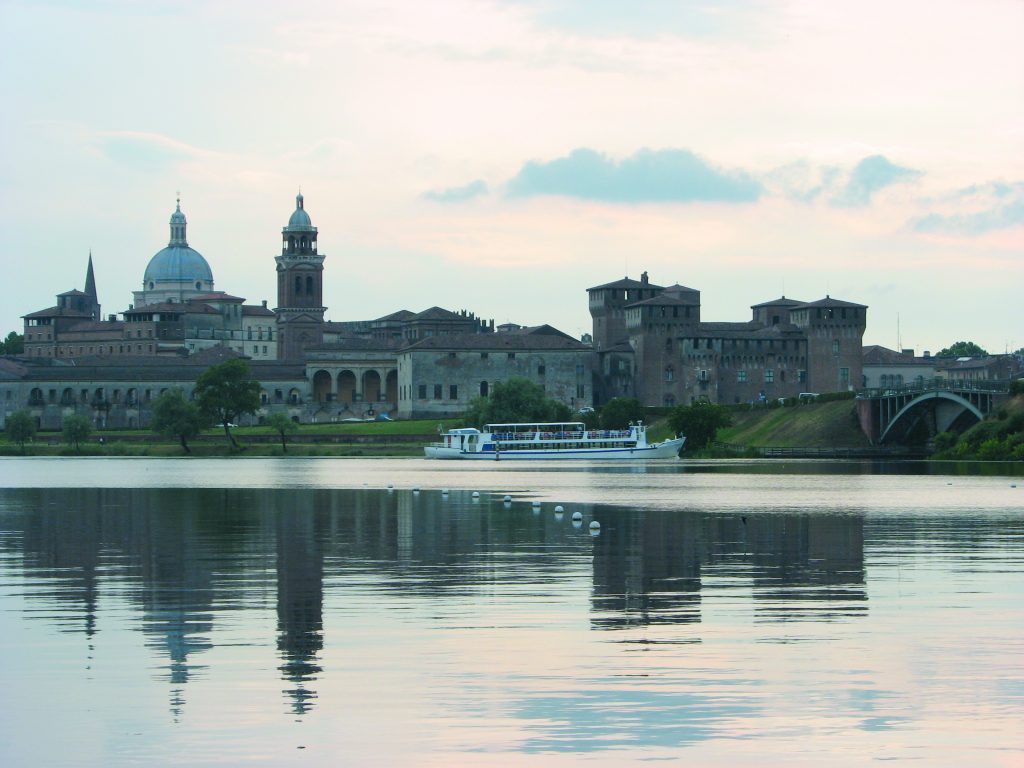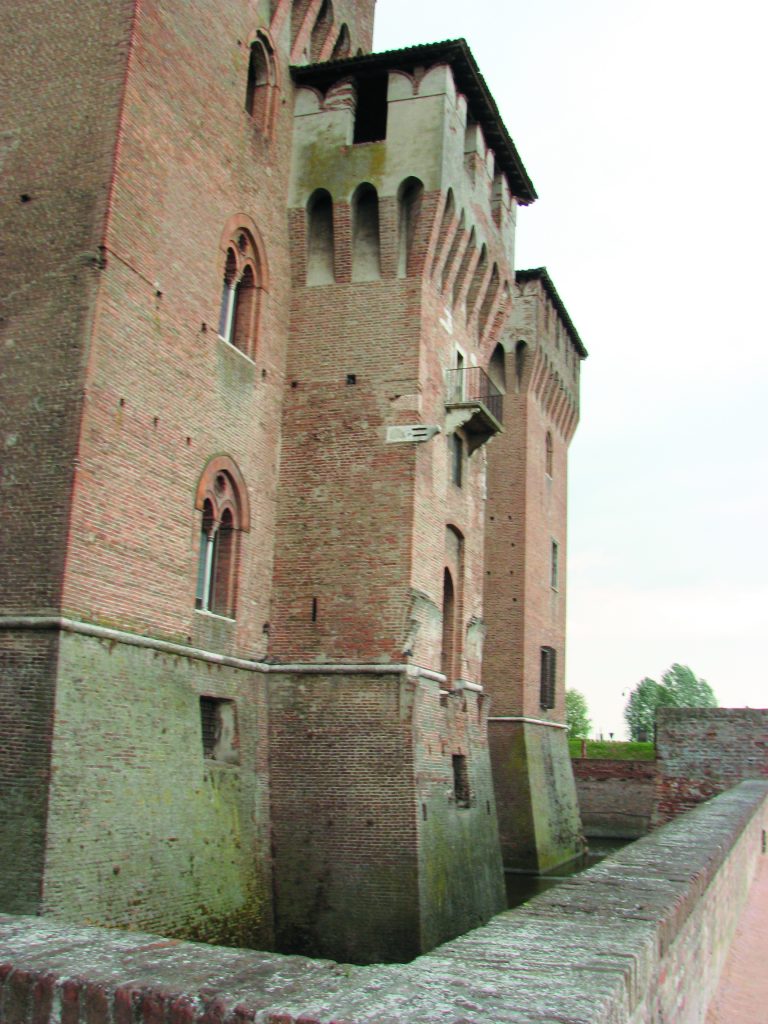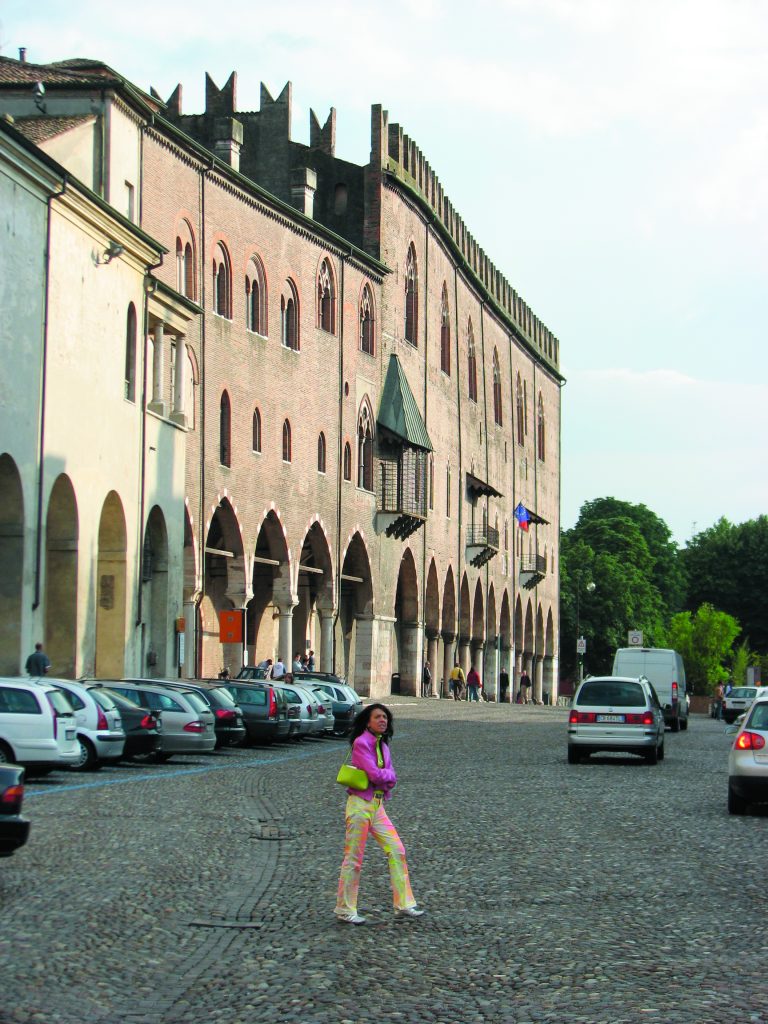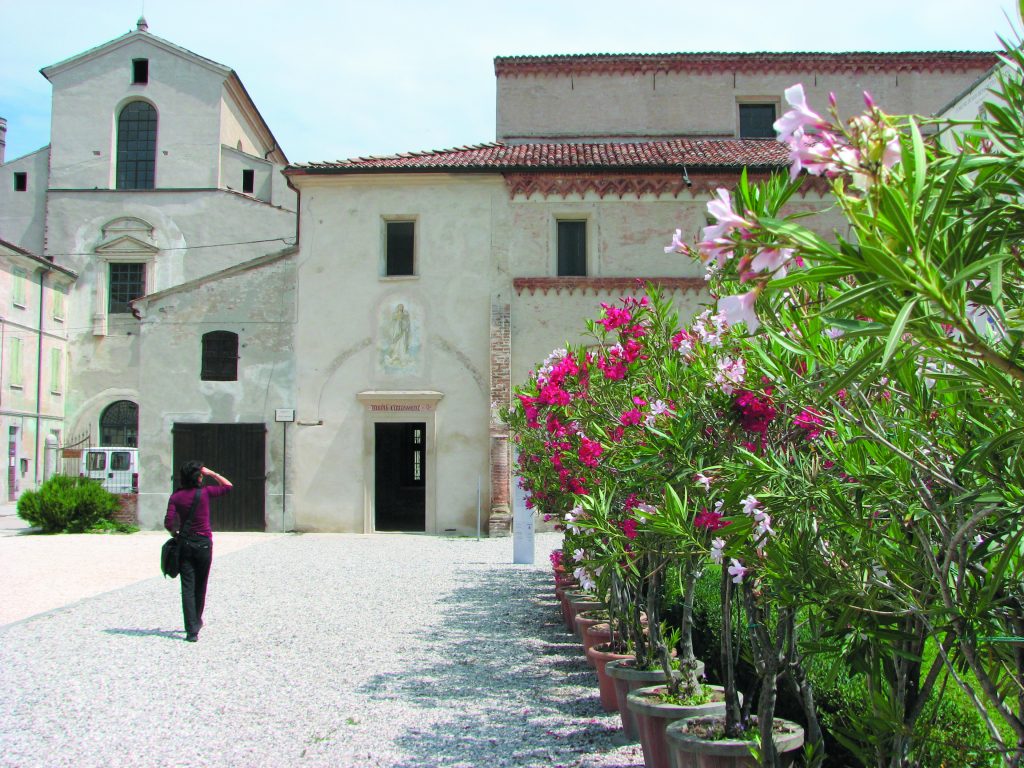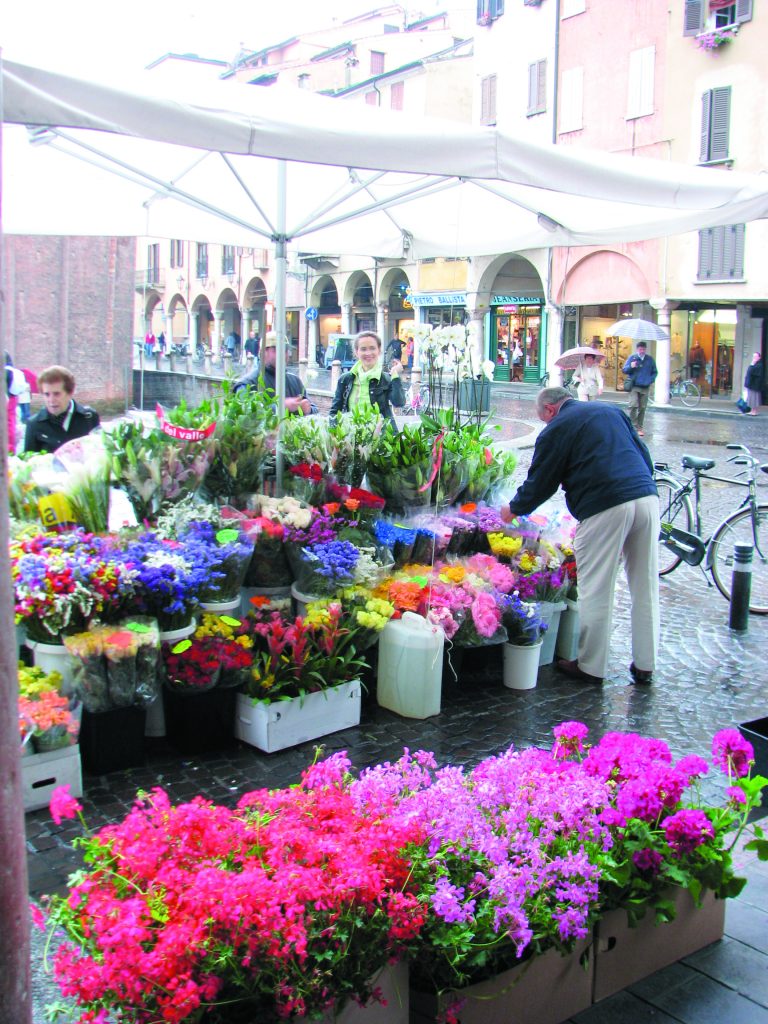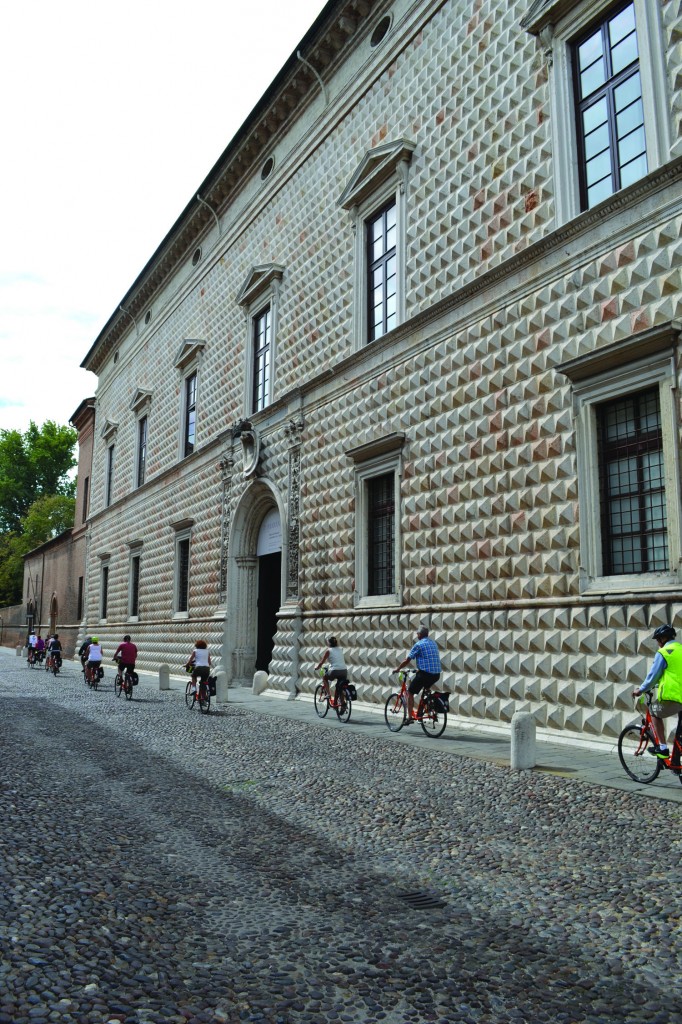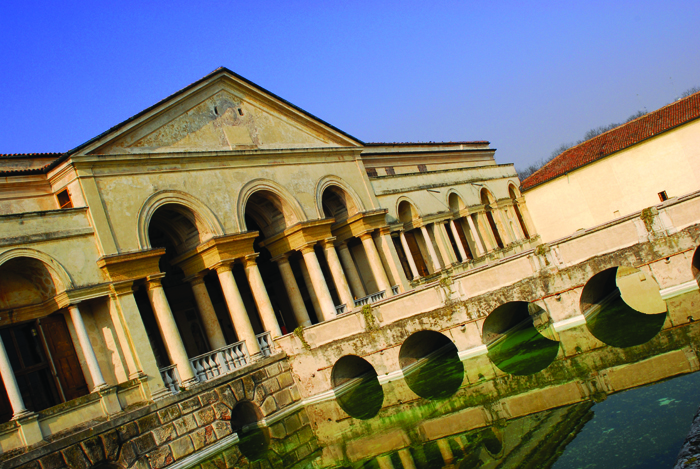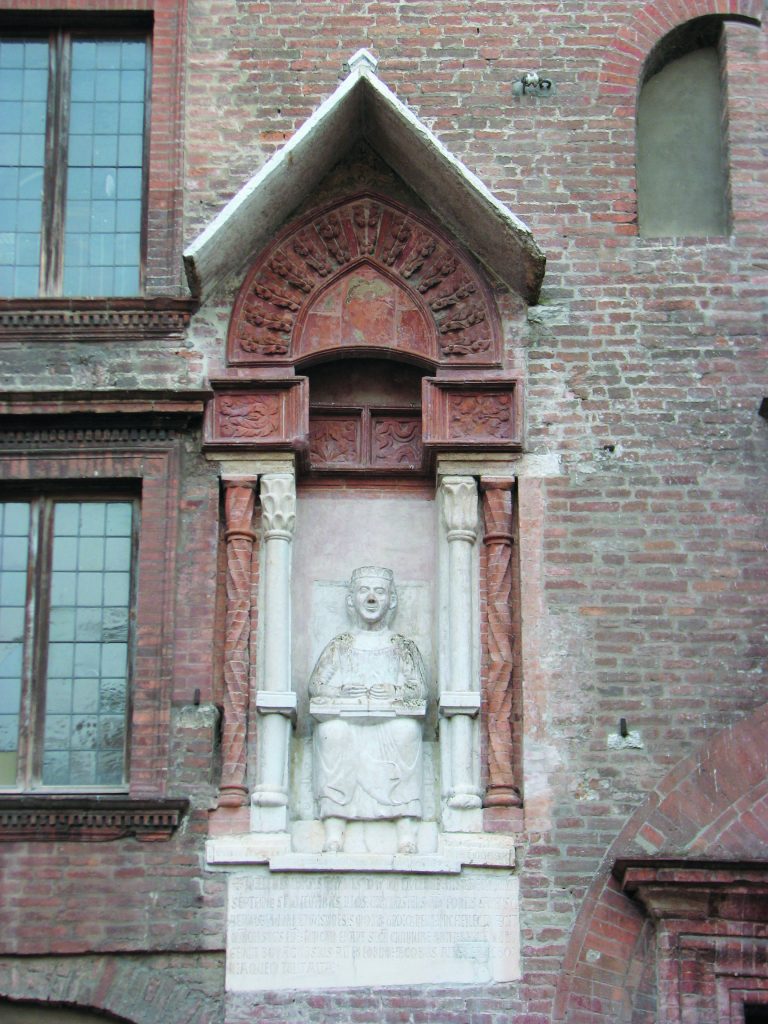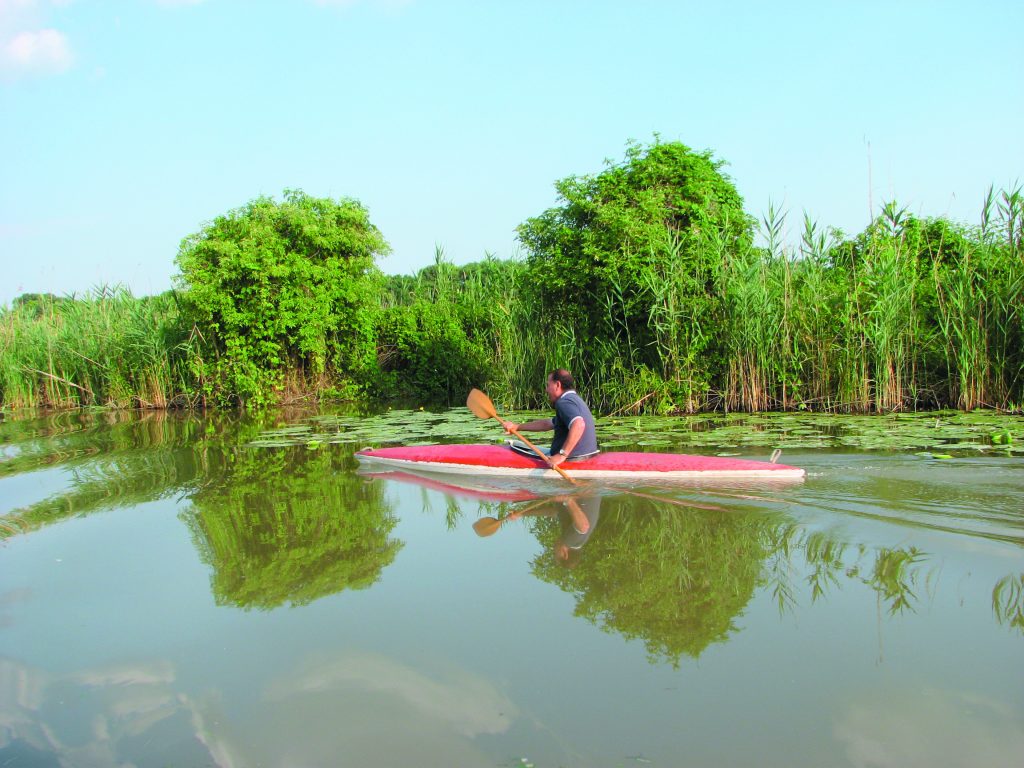Sarah Lane takes a relaxing stroll around the lakeside oasis in Lombardy to find out more about nesting storks, Latin poets and the singularly rampant Gonzaga dynasty
Approaching Mantua from the east you’re presented with the captivating sight of the city’s fairy-tale skyline, seemingly afloat on its watery foundations. Mantua is built in the middle of the River Mincio, a tributary of the Po, which flows southeast from Lake Garda. The town was originally an island surrounded by four lakes that form at this point of the river, three of which – Superiore, Di Mezzo and Inferiore, or top, middle and bottom – remain. The fourth, Lake Paiolo, was drained in the 18th century as the town expanded southwards.
The historic centre of Mantua is no less intriguing than its watery setting. Although you can’t actually see the lakes from most parts, the layout of the centre, with its succession of three picturesque squares, Piazza delle Erbe, Piazza Sordello and Piazza Broletto, echoes the outlying three-lake cushion.
Dominated by a medley of attractive buildings, ranging from the 11th-century Rotonda di San Lorenzo church to the 15th-century merchant’s house and the 18th-century facade of the cathedral, these interlinked squares are the hub of local life. Every week a market takes place each Thursday, where you can buy everything from fruit and vegetables to clothes, curtains and carving knives.
I arrived with my partner, Malaga, on a Friday, when the squares presented a tranquil tableau of bars and restaurants with tables and umbrellas spilling over the cobbles. Overlooked by a stone carving of what is generally thought to be a portrayal of the locally born Roman poet, Virgil, we watched the comings and goings of late morning Mantua, drinking in the relaxed atmosphere.
Looking forward to finding out more later about the local links with Virgil, we jumped forward a dozen centuries or so, and set off to discover the realm of the Gonzaga dynasty and the Palazzo Ducale. More like a town within a town than a palace, Mantua’s Palazzo Ducale is huge. It’s made up of numerous buildings, dating from the late 13th century onwards. Corridors linking the various palazzi, the Castle of San Giorgio and the Basilica of Santa Barbara and so on, were built in the 16th century, making it hard to realise which building you’re actually in.
The Gonzaga dynasty
Leave plenty of time for Palazzo Ducale. Although not all parts are open to the public at any one time, there are over 500 rooms and the area of the complex measures around 34,000sqm. You’ll find it’s not a place you’ll want to rush through, with room upon room of fantastic frescoes, richly inlaid ceilings and other works of art in a sequence of strongly contrasting styles that give fascinating insights into the life of the Gonzagas, rulers of Mantua from the early 14th century and for around 400 years after.
Originally a family of farmers called Corradi, the ambitious Gonzagas took their surname from their village of origin, rather than the other way round. Around a hundred years after taking Mantua by force in 1328, they bought themselves into nobility by paying 12,000 golden florins for the title of Marchese, along with the right to a family coat-of-arms featuring four imperious eagles, dozens of which you’ll see throughout the town and indeed the whole Mantua area. With a succession of political marriages to influential women and a successful money-making, horse-breeding business, the dynasty did well and in the 16th century Federico II Gonzaga was rewarded with the title of Duke.
At this time the Gonzaga court was at its very best – Federico’s parents, Francesco II and the great patron of the arts, Isabella d’Este, had built up a huge collection, much of which is to be found nowadays at none other than Hampton Court. A few generations down the line, Vincenzo Gonzaga, more obsessed by sex than by keeping his finances in order, frittered away much of the family wealth and managed to keep his head above water only by agreeing to sell the bulk of his precious heirlooms to the English king, Charles I.
After being wowed by the delectable frescoes by Mantegna in the camera degli sposi (the wedding chamber), the more exuberant style of Giulio Romano’s work and the general grandeur of the palace, our heads were spinning. Time for lunch.
Central Mantua has a wealth of attractive trattorias and restaurants and it really is hard to eat badly at any of them. We chose a cosy place in a narrow road leading towards the river, and escaped the onset of a shower. The local cuisine is an eclectic mix, which pulls as many surprises as the trompe l’oeils and other optical illusions in the décor of the Gonzagas’ dwellings.
Pride of place is taken by the pumpkin – tortelli di zucca is pasta filled with pumpkin and is one of the most unusual of them all. Neither of us being particularly enamoured of the sweet tang of pumpkin, but determined to give the local number one dish a try, we decided to share a portion. The taste is startling and, despite an initial shock to the palate, the flavour – particularly when accompanied by a good local wine – does grow on you.
In a town surrounded by water there is, of course, a great deal of fish to eat and rice is grown in the area too. Risotto alla pilota is the most popular risotto, made with sausage and Grana Padano, the local alternative to parmesan cheese.
Cyclists’ heaven
Emerging from the depths of the hostelry, we found that the shower hadn’t abated, so changed our plans, postponing the afternoon’s bicycle ride. Being in the middle of the Padania Plain, the flat lands around Mantua lend themselves excellently to cycling for all ages and abilities. Much work has gone into making smooth and safe cycle paths, suitable for all, and the feather in the province’s cap is the recently completed route as far as Peschiera on Lake Garda, about 40km away.
We didn’t plan on covering quite such a distance, though, hoping to go only as far as Bosco Fontana in the River Mincio Natural Park and the protected stork nesting area at Bertone. Still, even on a rainy afternoon, Mantua is a charming place and there’s plenty to see whether it’s shops, museums or churches you’re after. Not much mention of Virgil (author of the Aeneid and Dante’s elected guide in his Divine Comedy) to be found around town, though.
The other unmissable Gonzaga sight in Mantua is the Palazzo del Te, built and decorated from 1525 by Giulio Romano and his helpers for Federico II, the first Gonzaga duke, as an out-of-town Roman-style villa, for his leisure. Nowadays it is no longer out of town – just a stroll in fact from the centre – but as it’s surrounded by a park with an open-air swimming pool, a children’s playground and several bars, the atmosphere of relaxation remains.
Lusty appetites
Next morning at Palazzo Te we met up with Cristiana, a local guide, who delights in sharing the secrets of her city with visitors. She pointed out all sorts of details, starting with the salamander symbol, one of many devices used by the various members of the Gonzaga family to symbolise themselves or the whole clan.
Federico chose the salamander to be his own personal symbol as, considered a frigid animal, it was the very opposite of himself. Vigorous, successful and a man of healthy appetites, Federico was one of the most virile of the Gonzagas. He also lacked the hunchback that afflicted many of his relatives. In a loveless marriage, arranged for political reasons, the duke carried on a long-term love affair with Isabella Boschetti, much to the wrath of his mother and no doubt his wife too. Seeing himself in a situation parallel to that of Cupid and Psyche, he had the story painted in a fabulous fresco.
Federico wasn’t the only Gonzaga with a problematic love life. His grandson Vincenzo had it even worse, it would seem. Labelled as impotent, thanks to a difficult and childless first marriage, but set on marrying wife number two, Eleonora Medici of Florence, poor Vincenzo had to undergo a public virility test – to impregnate a young girl in front of witnesses!
After a couple of failed attempts – oysters, rather than having the desired aphrodisiac effects just upset his stomach – the girl, a poverty-stricken Florentine, given a willing husband and a comfortable life for her pains, became pregnant and Vincenzo passed the test. He continued to have a lifelong obsession with his virility, though, and had alchemists concoct potions from his home-grown herbs, and even tried an imported South American worm, purported to have ‘powers’ when applied to one’s most intimate parts…
After this somewhat indigestible series of titillating tales, we set off on our quest for evidence of the noble poet Virgil with renewed vigour and managed to track down Corte Virgiliana, a few kilometres out of town at Andes, a district of Pietole, where there’s also a small museum. The evidence is almost conclusive that the great Roman poet was born on this site, which later became a grand farm, owned by the Gonzagas. Today the Boccalari family does a fantastic job of running a large-scale dairy farm according to progressive, environmentally friendly methods, studied by university students.
The milk produced goes to make the delicious Grana Padano cheese, and you can also find it fresh to drink, on sale at an automatic distributor in Galleria Ferri in central Mantua. The house itself is an impressive villa, with its own chapel and majestic halls used for dinners and banquets. As an agriturismo farm, cosy accommodation is available too.
Tranquil waters
Satisfied at last at having found something on the world-famous ancient Roman poet, we felt worthy of a bit of relaxation and made for the lush terrain of the Mincio River Park at Le Grazie. This village is famed for its church, which contains a collection of weird and wonderful papier-mâché figures, celebrated each year on 15 August when a colourful pavement-drawing contest also takes place.
Crossing the square in front of the church, and taking the path down to the river, we were faced with an idyllic sight. Dogs and children ambled through the long grass while parents sat in the shade of trees and unpacked picnics. Behind them a couple of long, low river boats prepared to set off.
We made it down the slope in time to join the first group and spent an hour of total tranquillity floating along the winding Mincio, hearing all about the life of the river from the wizened character who was our boatman. All sorts of water birds animated the scenery, along with lovely water lilies and other vegetation. The best time to do this trip, apparently, is in July or August, when the unbelievable sight of kilometres and kilometres of lotus flowers – huge, pink and gorgeous – makes the experience surreal.
Back in Mantua we crossed over the San Giorgio bridge once more to take our leave of the town with a last glimpse of that stunning skyline from across the water, this time confident in our ability to identify some of the memorable buildings we had visited.
Running for cover under a tree as another springtime shower freshened the air, we realised that the sun was still out and looking for the rainbow, saw that it nestled snugly right over romantic Mantua itself – a perfect frame for such a dream-like town.

